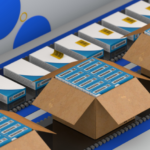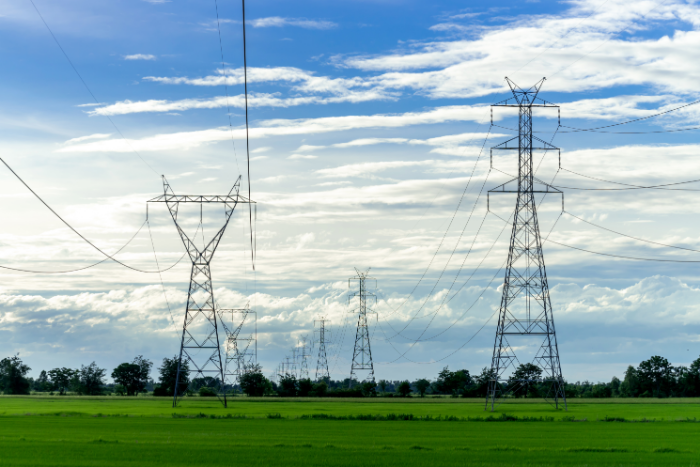Powerline networking technology has become a popular solution for extending internet connectivity in homes and businesses. But what exactly is this technology, and how does it work? If you’ve ever wondered how you can get internet access through your existing electrical wiring, then powerline networking might just be the answer you’re looking for. Let’s dive into what powerline networking technology is all about and explore its features, benefits, and practical applications.
What is Powerline Networking?
Powerline networking is a technology that allows you to transmit data over the electrical wiring already present in your home or office. Essentially, it turns your power outlets into network connection points. This means you can plug a powerline adapter into any electrical socket and get a stable internet connection without the need for additional cabling.
How Does Powerline Networking Work?
The concept behind powerline networking is simple yet ingenious. It uses powerline adapters that plug into standard electrical outlets. These adapters communicate with each other by sending data signals over the existing electrical wiring. The first adapter is usually connected to your router, while the second (and any additional adapters) can be placed in other rooms to provide internet access wherever there’s an outlet.
History and Evolution of Powerline Networking
Powerline technology has been around since the early 20th century, primarily used for communication and control in power grids. However, it wasn’t until the late 1990s that powerline networking for internet connectivity started gaining traction. Over the years, advancements in signal processing and data transmission have significantly improved the speed and reliability of powerline networking.
Key Features of Powerline Networking
- High-Speed Internet Access: Modern powerline adapters support speeds of up to 1 Gbps, making them suitable for activities like streaming, online gaming, and video conferencing.
- Reliable and Stable Connection: Unlike Wi-Fi, which can be affected by interference and obstacles, powerline networking offers a more stable connection by using wired electrical circuits.
- Cost-Effective Solution: Powerline adapters are typically more affordable than installing new Ethernet cables throughout your home.
Benefits of Using Powerline Networking
- Easy Installation and Setup: Powerline networking is as simple as plugging in a few adapters. No technical expertise is required.
- Extending Internet Coverage: If your Wi-Fi signal struggles to reach certain areas, powerline adapters can help extend your network’s reach.
- No Additional Wiring Needed: Since it uses your existing electrical wiring, there’s no need for drilling or running new cables.
Common Use Cases for Powerline Networking
- Home Networking Solutions: Ideal for homes with thick walls that block Wi-Fi signals.
- Office and Business Applications: Powerline networking can provide reliable internet access in office buildings without complex installations.
- IoT Device Connectivity: Use powerline networking to connect smart home devices like cameras, thermostats, and smart speakers.
Powerline Networking vs. Wi-Fi
When it comes to choosing between powerline networking and Wi-Fi, it often depends on your specific needs.
- Speed and Reliability: Powerline offers more consistent speeds in areas where Wi-Fi signals are weak due to distance or interference.
- Flexibility: Wi-Fi is better for mobile devices, while powerline is great for stationary devices like smart TVs, gaming consoles, or desktop computers.
Powerline Networking vs. Ethernet
Ethernet is known for being the gold standard in network connectivity, but it requires running cables through walls or along baseboards. Powerline networking, on the other hand, uses existing electrical wiring to deliver similar performance without the hassle.
Types of Powerline Adapters
- Basic Powerline Adapters: Great for simple internet connections.
- Wi-Fi Extender Powerline Adapters: Combine powerline networking with Wi-Fi capabilities.
- High-Speed Gigabit Powerline Adapters: Ideal for heavy internet usage like 4K streaming and online gaming.
How to Set Up a Powerline Network?
Setting up a powerline network is straightforward:
- Plug one adapter into an outlet near your router and connect it with an Ethernet cable.
- Plug additional adapters into other outlets where you need internet access.
- Pair the adapters (usually by pressing a button) to establish a connection.
Security Considerations in Powerline Networking
Modern powerline adapters come with built-in encryption to protect your data. However, it’s still a good practice to change default passwords and keep firmware up to date to ensure your network is secure.
Limitations of Powerline Networking
- Interference: Appliances like microwaves and fluorescent lights can cause interference.
- Range Limitations: The performance may degrade over longer distances or if the wiring is old or damaged.
Future of Powerline Networking Technology
As technology evolves, we can expect even faster and more reliable powerline networking solutions. Innovations like G.hn (a new standard for wired communications) are already pushing the boundaries of what’s possible.
Conclusion
Powerline networking is a versatile and cost-effective solution for extending internet connectivity without the hassle of additional wiring. Whether you’re looking to enhance your home network or improve your office connectivity, powerline technology offers a practical alternative to traditional Wi-Fi and Ethernet solutions.
FAQs
- What devices are compatible with Powerline networking?
Most powerline adapters are compatible with any device that has an Ethernet port, including smart TVs, gaming consoles, and desktop computers. - Can Powerline adapters work in different rooms?
Yes, as long as the rooms are on the same electrical circuit, powerline adapters can transmit data effectively. - Is Powerline networking faster than Wi-Fi?
Powerline networking can offer more consistent speeds than Wi-Fi, especially in areas with poor Wi-Fi coverage. - Are Powerline adapters secure?
Yes, they typically use encryption to secure the data being transmitted over your electrical wiring. - Do Powerline adapters use a lot of electricity?
No, powerline adapters are energy-efficient and consume minimal electricity.





